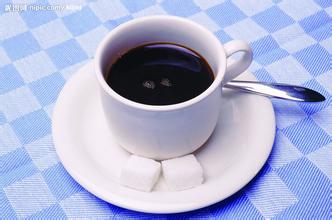The Flavor and Taste characteristics of Indonesian Coffee Manor
Indonesia is located in southeastern Asia, crossing the equator, bordering Papua New Guinea, East Timor and Malaysia, and facing Thailand, Singapore, the Philippines, Australia and other countries.
Indonesia crosses the equator (12 °S-7 °N), and more than 70% of its territory is located in the southern hemisphere, so it is the largest country in the southern hemisphere of Asia (Timor-Leste is also a southern hemisphere country). With longitudes ranging from 96 °E to 140 °E and more than 5500 km from east to west, it is the most extensive Asian country except China. [7]
Region
Indonesia is the largest archipelago country in the world, consisting of about 17508 large and small islands between the Pacific and Indian oceans. The land area is about 1.904 million square kilometers and the marine area is about 3.166 million square kilometers (excluding the exclusive economic zone). The northern island of Kalimantan is across the sea from Malaysia and the island of New Guinea is connected to Papua New Guinea. It faces the Philippines in the northeast, the Indian Ocean in the southeast and Australia in the southwest. The total length of the coastline is 54716 kilometers. [7]
Topography
Indonesian islands are scattered, mainly Kalimantan, Sumatra, Irian, Sulawesi and Java. The interior of the islands is full of rugged mountains and hills, with only narrow plains along the coast, surrounded by shallow seas and corals.
Kalimantan Island, the mountains extend from the middle to the west, the coastal plain is vast, and the south is swampy.
Sumatra Island, the mountains slant from northwest to southeast, the northeast side of the mountains are hills and wide coastal alluvial plain, the eastern part of the plain is swampy.
Sulawesi is mostly mountainous, with only narrow plains along the coast.
On the island of Java, there are plains in the north and lava plateaus and mountains in the south.
Irian Island, with high mountains in the west, has the highest peak in Indonesia and the highest island peak in the world, Chaya Peak, 5030 meters above sea level, and a broad southern plain.
Sumatra, the second largest island in the Indonesian archipelago, is the center of Indonesia's oil industry, and its rubber and timber are also famous exports. But the coffee in Sumatra is more eye-catching, similar to Java coffee, but with slightly heavier grains. Coffee beans from Mandheling and Ankola have also received a lot of attention, and the former is even known as the world's fullest coffee beans.
The island of Sulawesi, located between Borneo and New Guinea, is sometimes called Celebes. The coffee produced on the island is full-grained and full-scented, and the best coffee beans come from Kalosi and rand buns in the south of the island.
One of the main coffee producers in New Guinea is the Siegel Plantation, whose products are the same as the overall style of archipelago coffee, full of particles and well balanced.
On the whole, Indonesian coffee has a strong flavor, mellow taste, slightly syrup flavor and excellent acidity, and its two main export markets are Germany and Japan, which reflects the excellent quality of the coffee. What attracts consumers is the unique quality of its Arabica coffee beans. Indonesian coffee is divided into six grades, the best of which is AP.
Although Indonesia produces so much admirable coffee, it is puzzling that local residents prefer Turkish coffee to its famous European coffee, which is produced throughout the Indonesian island. Java plays an extremely important role in coffee history.
In the mid-17th century, coffee trees were introduced to Indonesia by the Dutch (some official sources believe that earlier). The first batch of coffee from Java was sold to Amsterdam in 1712. However, coffee trees in all plantations were destroyed by coffee rust in 1877, and Robart coffee trees had to be introduced from Africa to replace the original species. Today, only 6% of coffee beans and 10% of coffee beans are Arabian coffee beans. Indonesia is the world's leading producer of Robbins coffee, producing 6.8 million bags of coffee a year, with more than half of the coffee coming from small plantations, accounting for about 90 per cent of the total production.
The best growing areas of the archipelago are in Java, Sumatra, Sulawesi and Flores.
Java produces exquisite aromatic coffee with relatively low acidity, delicate taste and good balance. Java coffee has a better aroma and acidity than coffee from Sumatra and Sulawesi. The best plantations in Java are Brawan, James Bitt, Cayumas and Pankur. Java mocha is a mixture of Java and Yemeni mocha.

Important Notice :
前街咖啡 FrontStreet Coffee has moved to new addredd:
FrontStreet Coffee Address: 315,Donghua East Road,GuangZhou
Tel:020 38364473
- Prev

Introduction to Berman Manor in Kenya Coffee Manor with perfect and balanced taste
Coffee trees in Kenya can bloom twice a year. Most coffee trees bloom in March and April after the long rainy season, and in most coffee producing areas, the harvest season lasts from October to the end of the year. Some coffee trees blossom in October or November and are harvested in July of the following year. Kenyan coffee has always been picked by hand, and farmers only harvest red mature coffee beans.
- Next

Introduction to the characteristics of Indonesian Kopi Luwak Flavor Manor and Arabica Coffee Manor
Kopi Luwak is produced by the feces of Indonesian coconut cats (a kind of civet) as raw materials, so it is called Kopi Luwak. This kind of animal mainly feeds on coffee beans. After completing fermentation in the coconut cat's stomach, it destroys proteins, produces short peptides and more free amino acids, reduces the bitterness of coffee, and then excretes feces as the main raw material. Because coffee beans cannot be digested, they will be excreted.
Related
- Does Rose Summer choose Blue, Green or Red? Detailed explanation of Rose Summer Coffee plots and Classification in Panamanian Jade Manor
- What is the difference between the origin, producing area, processing plant, cooperative and manor of coffee beans?
- How fine does the espresso powder fit? how to grind the espresso?
- Sca coffee roasting degree color card coffee roasting degree 8 roasting color values what do you mean?
- The practice of lattes: how to make lattes at home
- Introduction to Indonesian Fine Coffee beans-- Java Coffee producing area of Indonesian Arabica Coffee
- How much will the flavor of light and medium roasted rose summer be expressed? What baking level is rose summer suitable for?
- Introduction to the characteristics of washing, sun-drying or wet-planing coffee commonly used in Mantenin, Indonesia
- Price characteristics of Arabica Coffee Bean Starbucks introduction to Manning Coffee Bean Taste producing area Variety Manor
- What is the authentic Yega flavor? What are the flavor characteristics of the really excellent Yejasuffi coffee beans?

